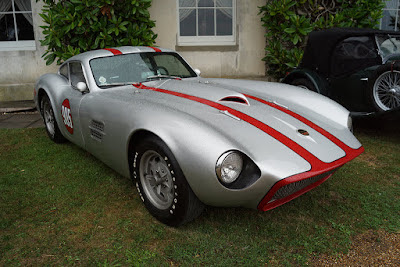AI Speed - The automotive industry has always been driven by innovation and the pursuit of pushing boundaries. Since the invention of the automobile, the fascination with speed, performance, and groundbreaking design has led to the creation of the sports car—a symbol of engineering excellence and human ambition. This relentless drive for progress has now reached an intriguing intersection: the fusion of electric technology and artificial intelligence in the realm of high-performance vehicles.
 |
| The ROBO X, an electric supercar developed by JiYue, a company formed through the partnership of Chinese tech giant Baidu and automotive powerhouse Geely. (Picture from: CNEVPost) |
Enter the ROBO X, an electric supercar developed by JiYue, a company formed through the partnership of Chinese tech giant Baidu and automotive powerhouse Geely in 2021. JiYue’s vision redefines the sports car by incorporating advanced autonomous capabilities, setting it apart in a fiercely competitive market. With its promise of combining unparalleled speed and AI-driven intelligence, the ROBO X challenges traditional notions of what it means to drive a supercar.
 |
| The JiYue ROBO X, featuring a shark-like front fascia, a prominent hood scoop, and aggressive aerodynamic elements, boasts a style that is both futuristic and functional.. (Picture from: CNEVPost) |
ROBO X boasts astonishing performance statistics, including the ability to accelerate from 0 to 100 kph in under 1.9 seconds and an impressive range of 650 km. While specific details about its powertrain remain under wraps, these figures place the vehicle in the upper echelon of the supercar hierarchy. Such capabilities are not merely about speed; they highlight JiYue’s ambition to reshape expectations in the electric sports car arena.
 |
| The JiYue ROBO X boasts astonishing performance statistics, including the ability to accelerate from 0 to 100 kph in under 1.9 seconds and an impressive range of 650 km.. (Picture from: CNEVPost) |
 |
| JiYue calls the ROBO X a 'supercar with AI capabilities that for the first time combines autonomous driving in a sports car'. (Picture from: CNEVPost) |
Beyond its striking appearance and raw power, the ROBO X integrates Baidu Apollo’s advanced self-driving technology, previously seen in robotaxis. JiYue claims this is the first sports car capable of delivering autonomous driving experiences tailored for circuit racing. This revolutionary concept raises questions about the essence of racing—traditionally a celebration of human skill and instinct—when AI takes the wheel.
 |
| The JiYue ROBO X also features massive air intakes and rear fenders with dynamic wings, emphasizing its sporty essence. (Picture from: CNEVPost) |
JiYue is not stopping at the ROBO X. Its next creation promises even more thrilling possibilities. Featuring a quad-motor, liquid-cooled powertrain, the future model aims to deliver unmatched acceleration and power. Although specific output figures are still under wraps, its 1.9-second 0-to-60 mph capability ensures it will stand as one of the quickest electric supercars globally, outpacing competitors like the YangWang U9 and Xiaomi’s SU7 Ultra.
 |
| The JiYUe ROBO X, , featuring a quad-motor, liquid-cooled powertrain, the future model aims to deliver unmatched acceleration and power. (Picture from: CNEVPost) |
With a projected range of 400 miles, the ROBO X aims to balance performance with practicality, though track usage may affect its range. The model is set to begin delivery in 2027, offering the world a glimpse into the potential of AI-driven racing and intelligent driving technologies in the years to come.
 As JiYue charts this ambitious path, the automotive world waits with bated breath. Will the ROBO X redefine the sports car and racing segments, or will its AI-driven innovations spark debate over the future of driving? Only time will tell, but one thing is certain: JiYue has set the stage for a fascinating evolution in automotive history. *** [EKA | FROM VARIOUS SOURCES | JIYUE | ROBBREPORT | SUPERCARBLONDIE | CNEVPOST | ELECTREK ]
As JiYue charts this ambitious path, the automotive world waits with bated breath. Will the ROBO X redefine the sports car and racing segments, or will its AI-driven innovations spark debate over the future of driving? Only time will tell, but one thing is certain: JiYue has set the stage for a fascinating evolution in automotive history. *** [EKA | FROM VARIOUS SOURCES | JIYUE | ROBBREPORT | SUPERCARBLONDIE | CNEVPOST | ELECTREK ]Note: This blog can be accessed via your smart phone




































